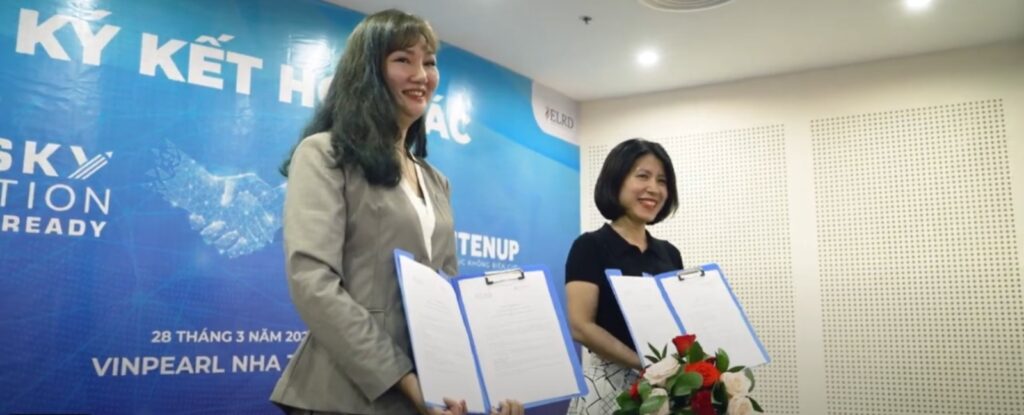Introduction
As the world becomes increasingly reliant on technology and automation, the demand for professionals with well-rounded skills is on the rise. In addition to technical expertise, employers are seeking candidates with soft skills such as creativity, persuasion, and collaboration. This has led to the evolution of STEM education, with the integration of arts to create STEAM.
In this article, we will explore the growing relevance of STEAM education in the modern workforce. We will discuss the shift from STEM to STEAM and its implications, the importance of soft skills in today’s job market, and the potential for high-paying and in-demand careers in STEM fields.
The Evolution of STEM and the Need for STEAM
The traditional focus of STEM education has been on technical skills such as science, technology, engineering, and math. However, as the workforce evolves, there is a growing demand for professionals with a well-rounded skill set. This shift has led to the integration of arts into STEM education, giving rise to the concept of STEAM. With the increasing importance of soft skills in the workplace, the need for STEAM education is more important than ever.
Employers are looking for individuals who not only possess technical expertise but also have strong communication, collaboration, and critical thinking skills. STEAM education cultivates these soft skills in students by incorporating humanities, language arts, and various art forms into traditional STEM subjects. This interdisciplinary approach prepares students for the diverse and dynamic workforce of the future.
In addition to developing soft skills, STEAM education also offers numerous benefits, including fostering creativity and innovation, encouraging problem-solving and adaptability, and promoting a well-rounded education. With the growing emphasis on interdisciplinary collaboration in the workplace, STEAM education is becoming increasingly relevant and necessary for students to succeed in their future careers.
What is STEAM Education?
STEM education has traditionally focused on science, technology, engineering, and math. However, as the demand for soft skills in the workplace grows, the integration of arts into these fields has become crucial. This has led to the development of STEAM (science, technology, engineering, arts, and math) curricula.
STEAM education incorporates the study of humanities, language arts, dance, drama, music, visual arts, design, and new media. It recognizes the importance of creativity, innovation, and critical thinking in addition to technical skills. By combining the arts with STEM, students are encouraged to think outside the box and approach problem-solving from multiple perspectives.
STEAM education is highly interdisciplinary, allowing students to explore the connections between different subjects and industries. This not only prepares them for a variety of careers but also fosters a well-rounded and adaptable mindset. As industries continue to evolve and merge, the interdisciplinary approach of STEAM education will become even more relevant.
Soft Skills and Their Importance in STEAM
In today’s rapidly evolving workforce, technical skills alone are no longer enough to thrive in a career. Employers are now seeking professionals who possess a combination of technical expertise and strong soft skills. This is where STEAM education shines, as it not only focuses on teaching science, technology, engineering, and math, but also incorporates the arts, humanities, and language arts.
- Cultivating Soft Skills: STEAM education promotes the development of soft skills such as creativity, persuasion, and collaboration through its incorporation of arts and humanities. These skills are highly valued by employers and are essential for success in the workplace.
- Real-World Relevance: The arts and humanities provide a practical and relevant context for students to apply their technical skills. This not only enhances their understanding of the subject matter but also allows them to develop valuable soft skills that are applicable in the real world.
- Preparing Future Innovators: The integration of arts and sciences in STEAM education nurtures students’ creativity and critical thinking abilities, preparing them to become future innovators who can approach problems from multiple perspectives.
Overall, the inclusion of soft skills in STEAM education creates well-rounded professionals who are equipped to succeed in the modern workforce.
High Earning and In-Demand Careers in STEM
The demand for STEM professionals continues to grow in various industries, making it a lucrative and in-demand field of study. According to the Bureau of Labor Statistics, information security analysts, mathematicians, and statisticians are among the highest-paying and fastest-growing careers in STEM. These roles require strong analytical and problem-solving skills, making them ideal for individuals with a STEM background. With the increasing reliance on technology and data, the demand for these professionals is expected to continue to rise. Furthermore, the constantly evolving nature of STEM fields provides opportunities for career growth and innovation. STEM careers offer high earning potential and job security, making it a popular choice for students. However, it is important to remember the value of soft skills in these fields, and the integration of arts in STEM education through STEAM can help cultivate a well-rounded set of skills for a successful career.
The Growing Industry of Engineering
Engineering is a rapidly growing field in the STEM industry, offering a wide range of career opportunities. With the integration of arts into STEM education, the industry has expanded to include STEAM careers such as sound engineers and urban planners. The field of engineering is constantly evolving and adapting to meet the demands of society, making it an exciting and innovative industry to be a part of. From civil engineering to biomedical engineering, there is a diverse range of career paths available for aspiring engineers. With a high demand for technical skills and a focus on problem-solving, engineering offers a challenging and rewarding career path for those interested in the intersection of science, technology, and creativity. The potential for growth and innovation in engineering is endless, making it a promising and lucrative industry for future professionals.
The Diversity of STEAM Careers
The implementation of STEAM education has opened up diverse and exciting career opportunities for students. Professions such as architect, sound engineer, graphic designer, and urban planner all fall under the STEAM umbrella. These careers require a unique blend of technical skills in fields such as science, technology, and engineering, as well as creative and artistic skills. This interdisciplinary approach allows for innovation and growth in various industries, making STEAM careers highly valuable in the workforce. The diverse range of STEAM careers also allows individuals to explore their interests and passions, providing a fulfilling and dynamic career path. With the increasing demand for professionals with well-rounded skills, the STEAM curriculum prepares students for a successful and versatile future.
The Choice between STEM and STEAM
The debate between STEM and STEAM education has been ongoing for years. Some argue that a focus on STEM fields is essential to prepare students for the technological advancements of the future. Others advocate for the inclusion of arts and humanities in education, leading to the development of STEAM curricula.
However, the reality is that both STEM and STEAM are essential for a well-rounded education. Technical skills are crucial, but so are soft skills such as creativity and collaboration. It is not a matter of choosing between STEM and STEAM, but rather finding a balance between both approaches.
Incorporating arts into STEM education can enhance critical thinking, problem-solving, and communication skills. It also opens up diverse career opportunities for students in fields such as architecture, design, and media. Ultimately, a combination of both approaches can prepare students for a successful and fulfilling future in the workforce.
Conclusion
In today’s fast-paced and ever-evolving job market, the demand for well-rounded professionals with a blend of technical and soft skills is on the rise. This has led to the integration of arts into STEM education, giving rise to STEAM. By incorporating humanities, language arts, and various art forms into science, technology, engineering, and math curricula, STEAM education offers a more interdisciplinary and holistic approach to learning. It not only prepares students for high-paying and in-demand careers in STEM fields but also cultivates essential soft skills such as creativity, persuasion, and collaboration. The growing industry of engineering and the diverse range of STEAM careers further highlights the benefits of this approach. While there may be a debate between STEM and STEAM education, finding a balance between technical and soft skills is crucial for the success of students and the workforce. In conclusion, the integration of arts into STEM education through STEAM is essential for a well-rounded and adaptable workforce in the ever-changing landscape of the professional world.





